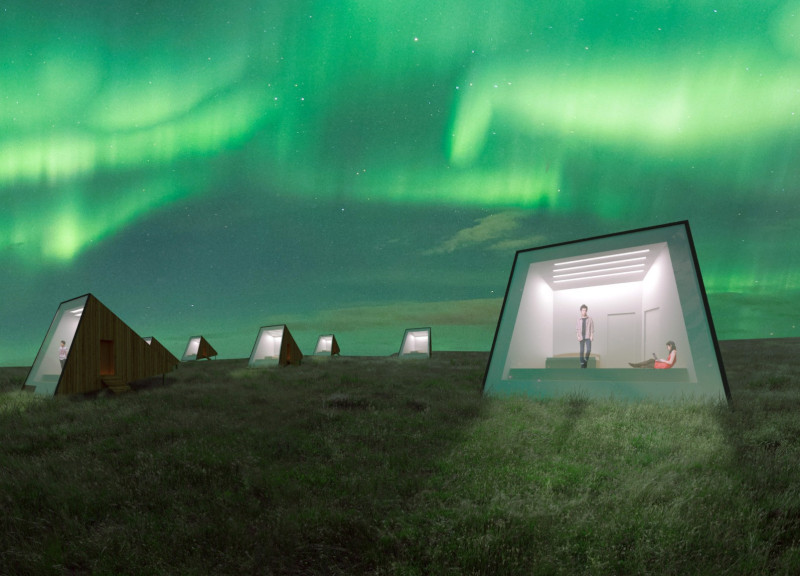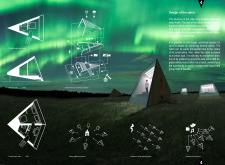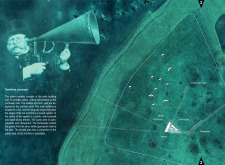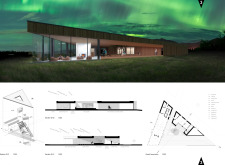5 key facts about this project
### Project Overview
Located in an area with optimal visibility of the northern lights, the Aurora's Sound design aims to create a harmonious relationship between human habitation and the surrounding natural environment. The project prioritizes the enhancement of auditory and visual experiences, integrating living spaces that are both adaptable and efficient. The architectural form draws inspiration from the concept of sound, resembling a hearing horn, which is reflected in the distinct structure and arrangement of both the cabins and the main building.
### Architectural Elements
**Structure and Form**
The cabins feature a sloping triangular roof that facilitates effective water runoff while optimizing solar energy collection. Large viewing windows provide direct engagement with the northern lights and the natural landscape, fostering an immersive experience for occupants. The modular configuration of the cabins allows for varied layouts, accommodating groups of different sizes and dynamics, with careful consideration given to communal and private spaces.
**Materiality and Sustainability**
The predominant use of wood emphasizes a warm aesthetic and a commitment to environmental harmony. Green roofing materials contribute to functional sustainability, while the integration of solar panels underscores a focus on renewable energy sources, enhancing the autonomy of the individual cabins. This approach reflects a broader ecological awareness within the design framework.
### Spatial Organization
The arrangement of the cabins along the northwest side strategically separates public and private areas to enhance the users' connection with nature while maintaining a coherent circulation pattern. The main building serves as a communal hub, incorporating essential facilities such as a kitchen and dining area, while the surrounding cabins are positioned to shelter against harsh winds and frame scenic views of a nearby lake, inviting moments of reflection and exploration.
Each cabin is designed to pivot 360 degrees, providing flexibility in orientation based on user preference for optimal views and weather conditions. Additionally, the focus on sound design invites occupants to experience the profound ambience of the retreat, balancing social interaction and personal solitude effectively.























































